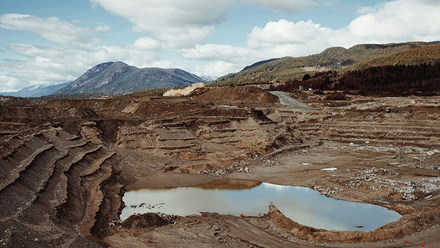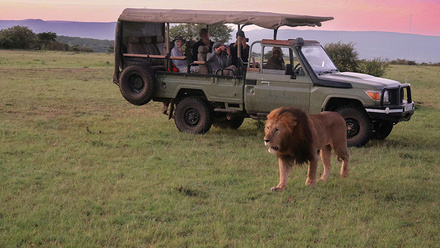Dusting down mining technology
With advancements in industrial automation and the use of camera technology to improve mining processes, safety and productivity, there is still one fly in the ointment – dust.

Mining occurs in a demanding and often hazardous working environment – adverse weather conditions, intense darkness, fires, dirt, water, and all in an environment where small optimisations can yield massive results and minutes of downtime can lose millions of pounds.
Furthermore, mining operations grapple with a formidable challenge arising from the colossal scale of machinery employed for transporting aggregate and minerals within the site, some of which can tip the scales at a staggering 10,000t. This potentially poses a significant hazard to human safety, both operationally as well as when being repaired or maintained.
Safety, rightly, is a top priority. The International Council on Mining and Metals (ICMM) reported in July 2023 that, of its 26 members, 33 fatalities occurred in 2022 – down from 45 in 2021. Nine of those fatalities were related to mobile equipment and transportation, and five were caused by falling objects.
In addition to mobile equipment being the greatest cause of fatalities, it is also the most geographically spread and has replaced ‘fall of ground’ as the most prevalent hazard.
However, there are also countless mines that operate outside of ICMM jurisdiction.
Where the mining industry is tightly regulated, every incident or accident undergoes rigorous scrutiny and in-depth analysis. Consequently, such incidents invariably result in either a partial or complete suspension of a mine’s operations, often lasting until an investigation is concluded. Should that investigation reveal a violation of regulations, it places the mining company at risk of forfeiting its operational licence, let alone potentially catastrophic financial losses. Investing in optimal solutions for collision and injury avoidance is critical.
Sensors are installed on existing mining equipment and can be used for navigation, anti-collision, obstacle detection and stockpile measurement, among other applications. They alert operators to potential obstacles or objects that may cause a collision. Some work as standalone systems and others complement each other.
Moving forward, a major challenge will be adapting existing technologies to fulfil new requirements. Automation and autonomous vehicles are our ‘dynamic peers’, but, as always with automation, a machine’s decision-making is only ever as good as the data input.
Sensor selection needs to consider the tasks at hand, including maintenance, multifunctionality, connectivity, the collection and analysis of data and, of course, cost.
Also, dust is an intrinsic by-product of mining operations, with mines regularly shifting and processing massive quantities daily. However, with this comes a new set of challenges, both for the naked eye and conventional optical equipment. While infrared cameras can mitigate these issues to some extent, only a limited number of cameras are resilient enough to endure the intense dust levels, and even then, they require a programme of frequent cleaning and maintenance that leads to costly downtime.
More traditional sensors, such as cameras or light detection and ranging (LiDAR), can struggle due to visibility limitations and, in particular, their inability to penetrate dust.
Operating within the radio frequency (RF) spectrum, radar can cut through obfuscation, including dust, fog, rain and smoke, providing reliable data in even the most challenging conditions – whether it is navigating underground tunnels, working during night shifts, or tackling dusty atmospheres.
Moreover, radar technology offers high accuracy in distance measurement and object detection. This precision is essential for automated mining technology to navigate mine sites with large equipment, ensuring that they can make informed decisions and avoid collisions effectively.
While concerted efforts continue to be made to reduce the amount of dust created in mining environments, including ventilation and filtering, it is near impossible to eradicate it completely. In open-pit mining, the problem is exacerbated.
While wind will disperse the dust to some extent, it only does so to surrounding areas and communities, which can cause additional health-related issues.
Given all that we know, prevention seems unlikely, so technological advancements need to concentrate upon cure.







